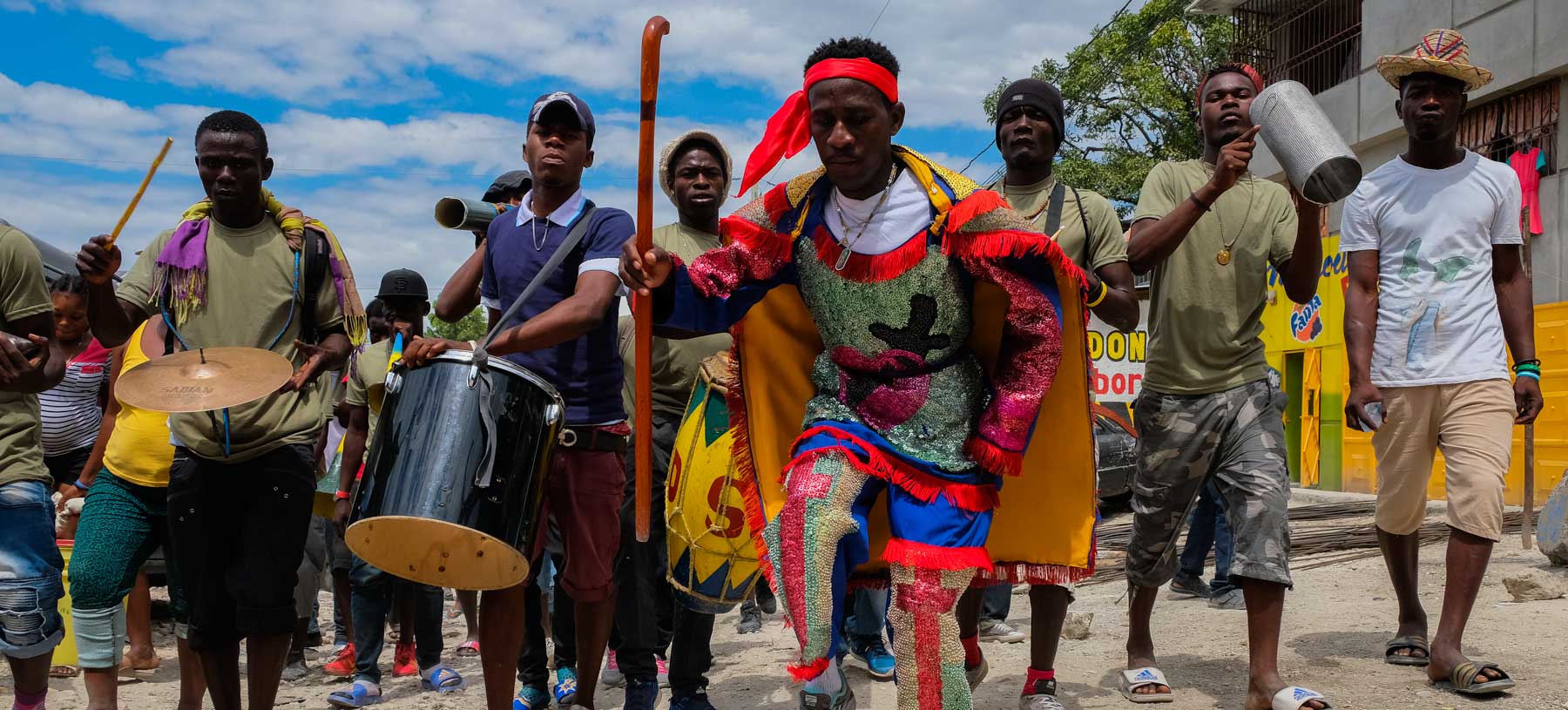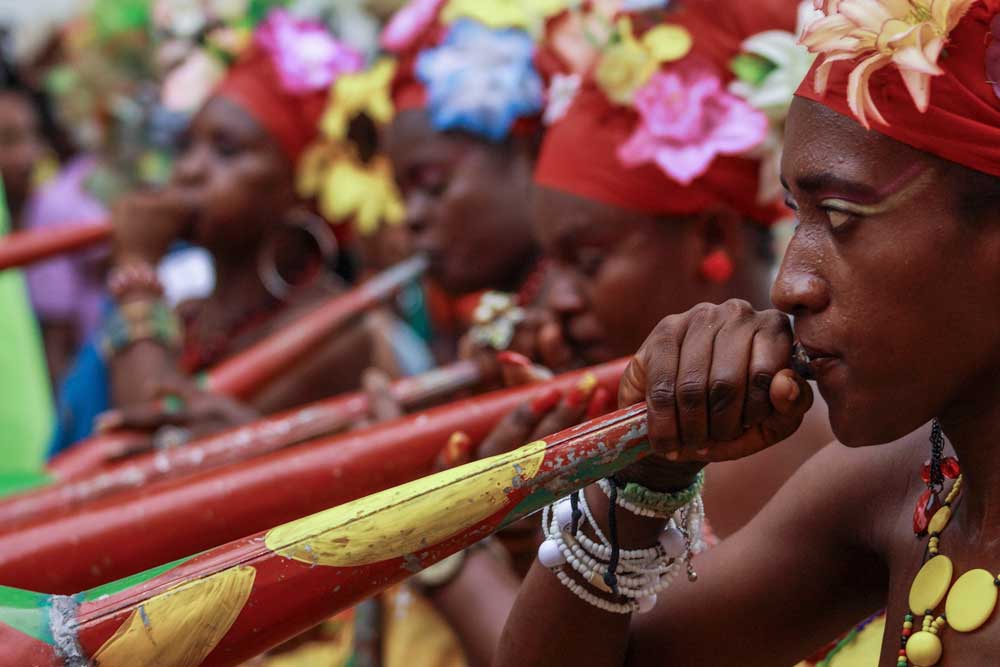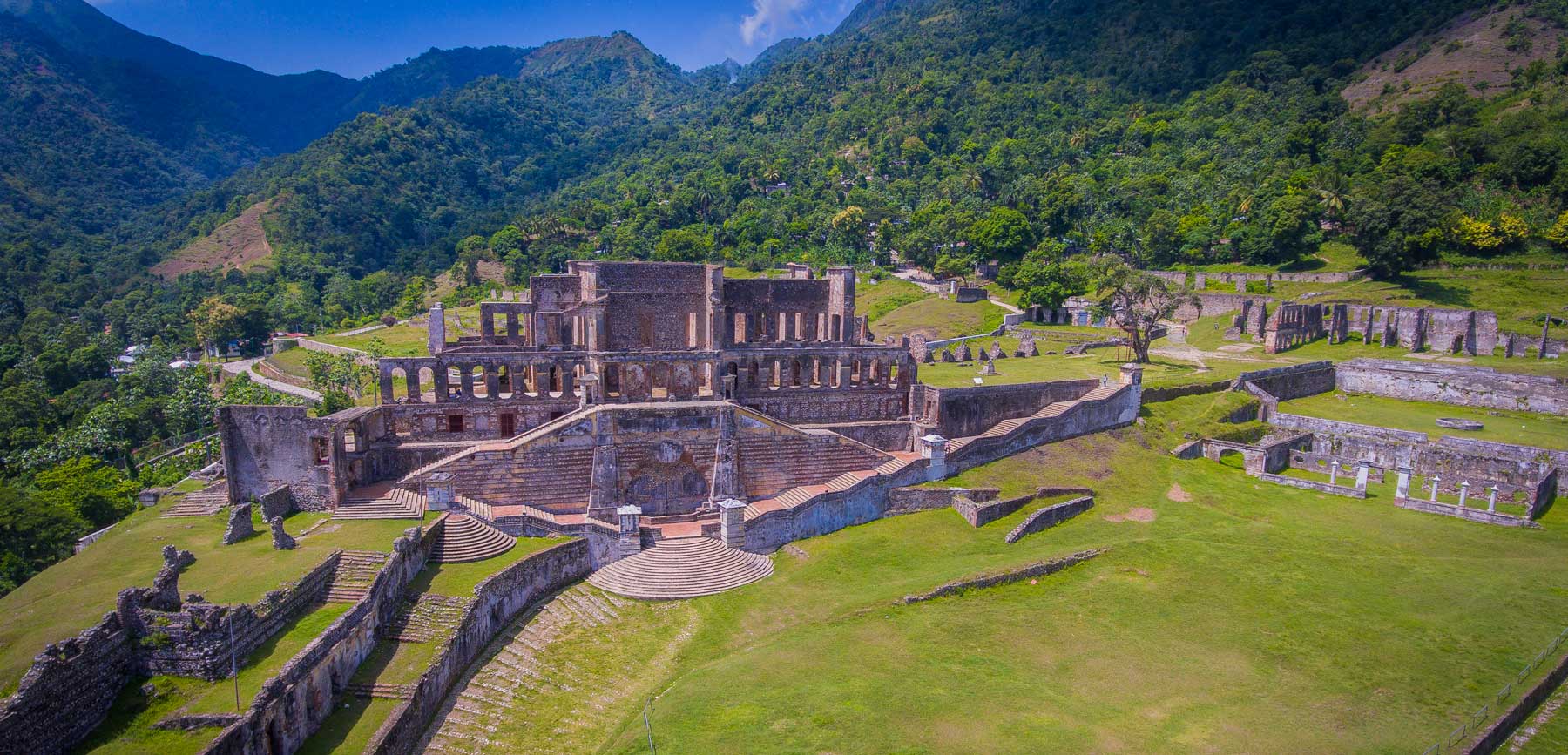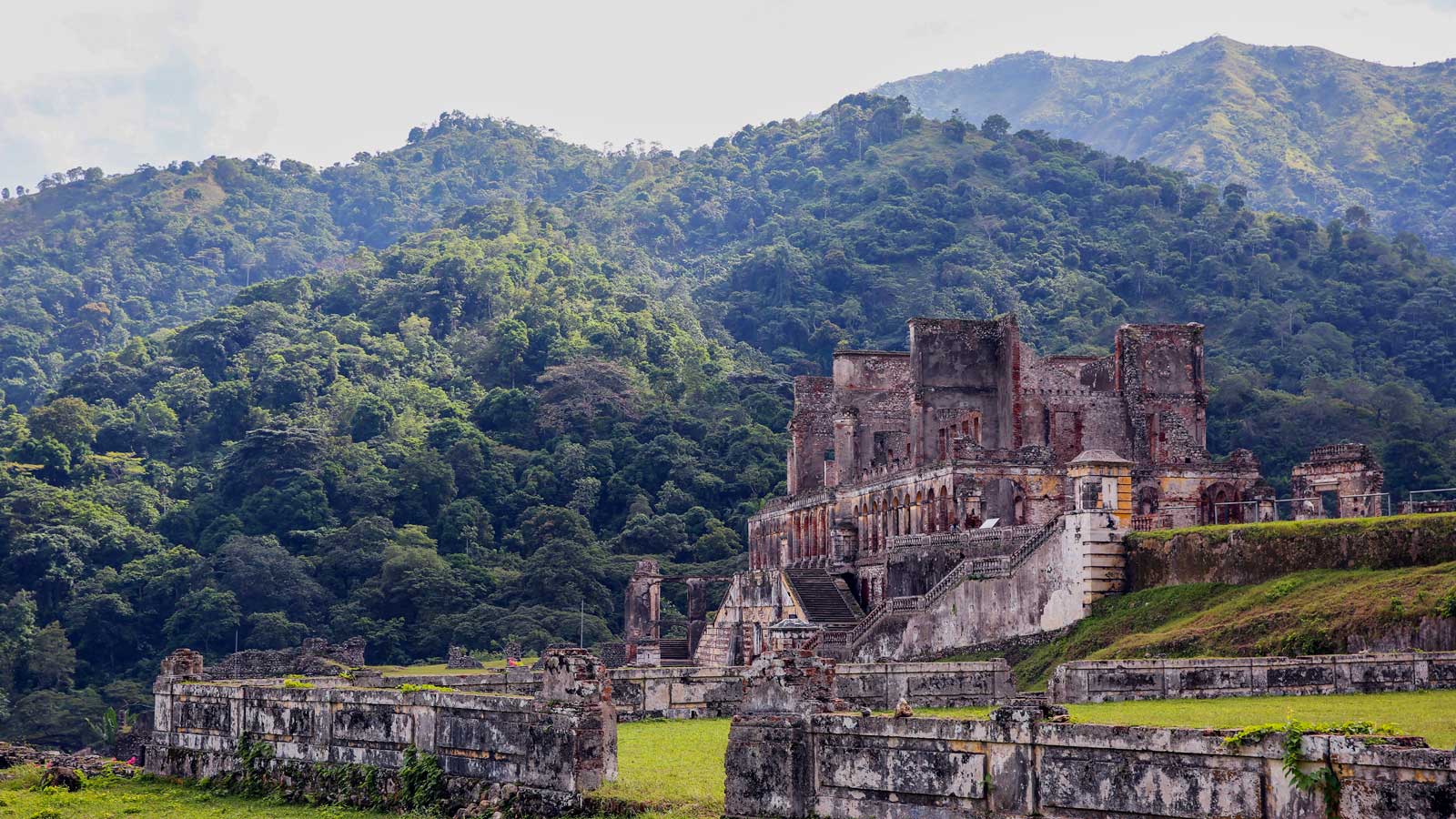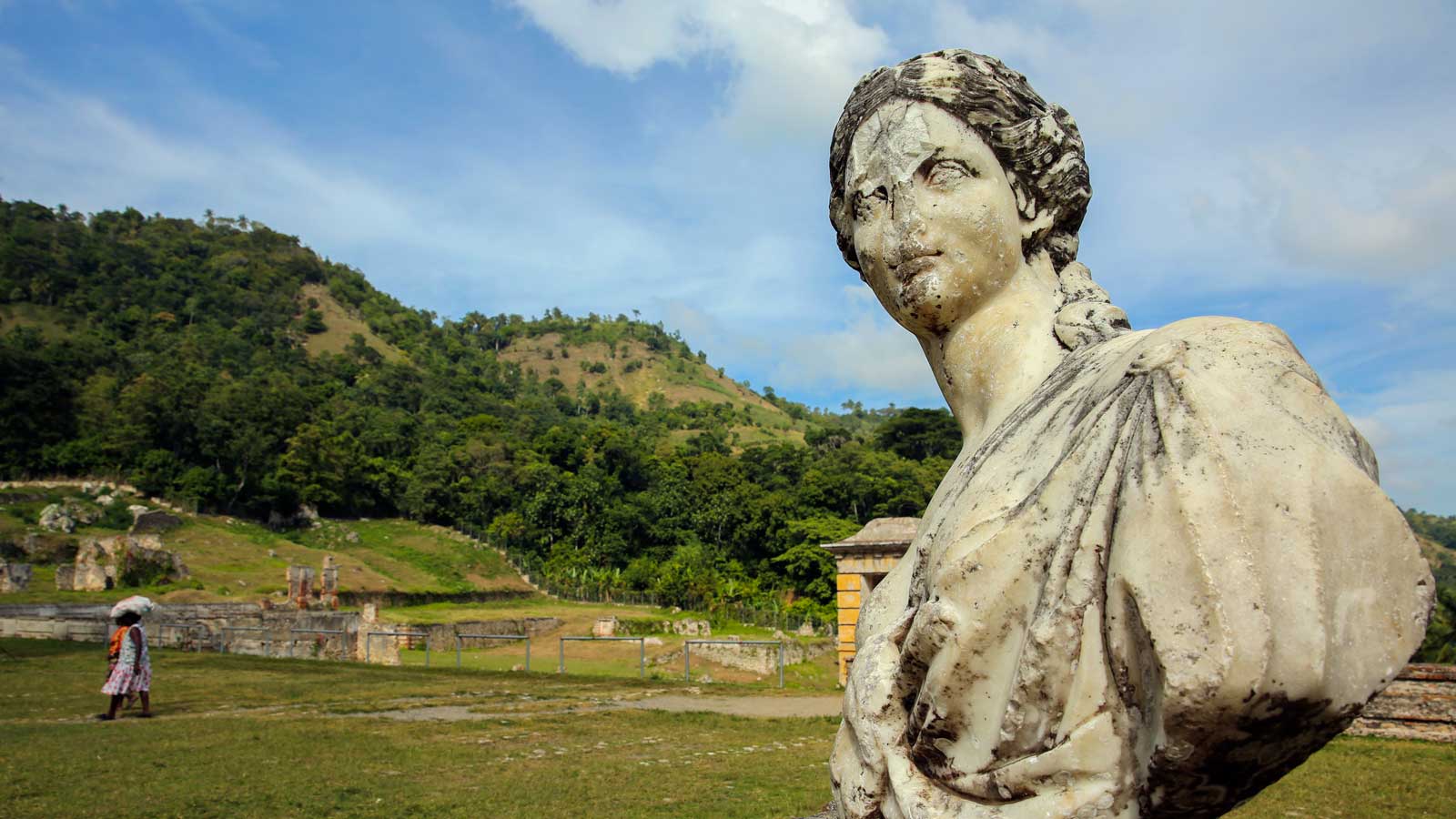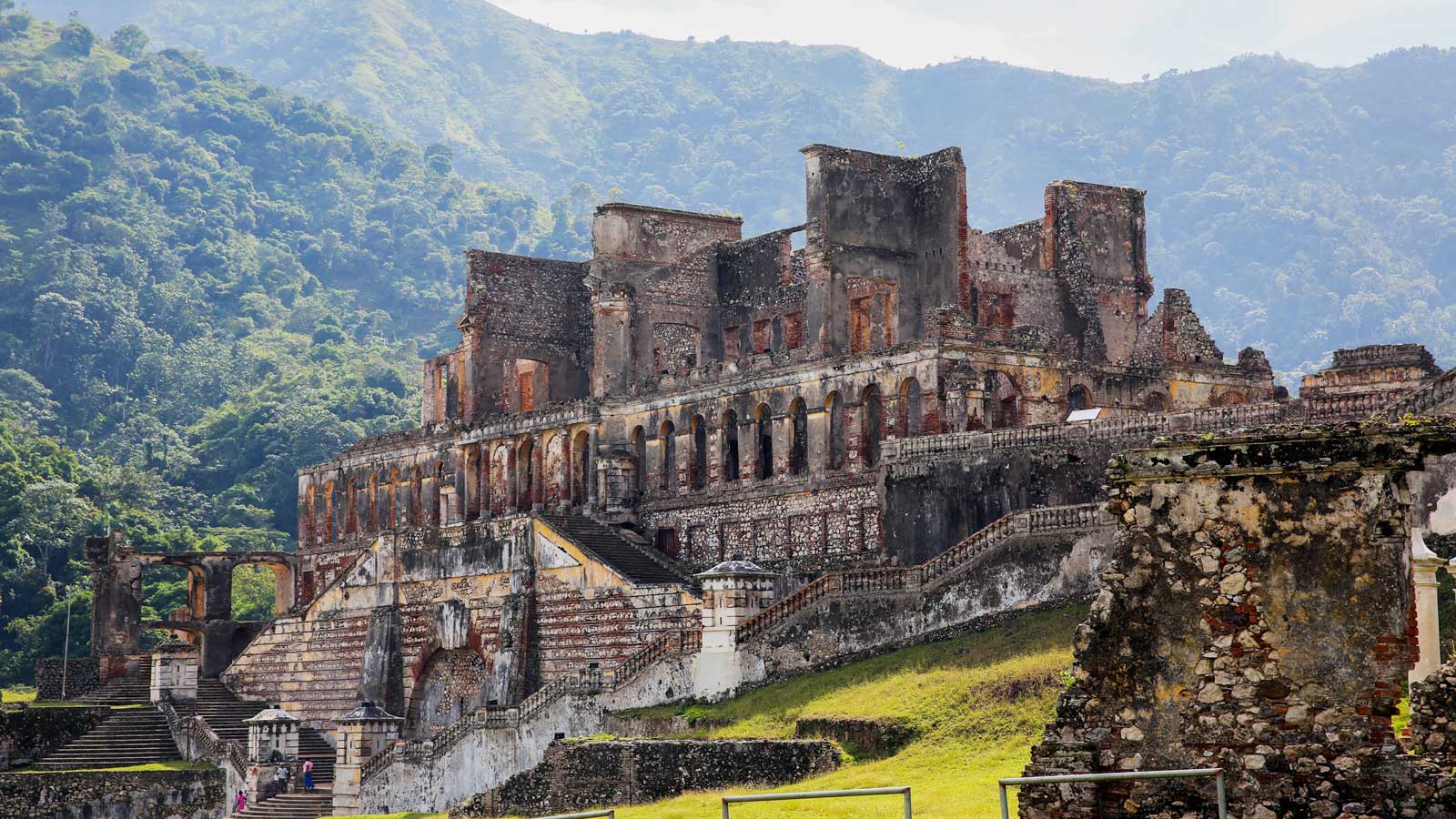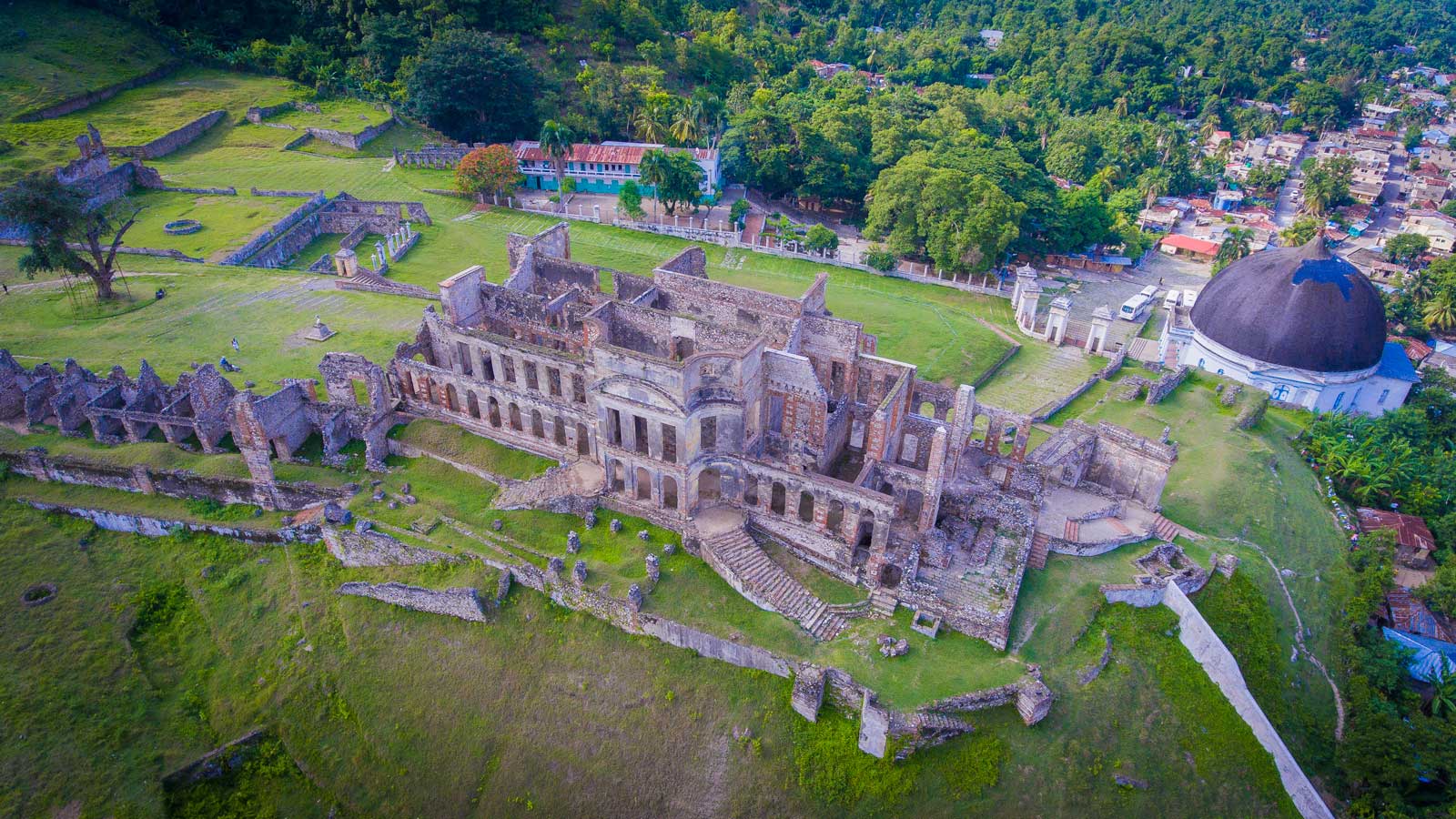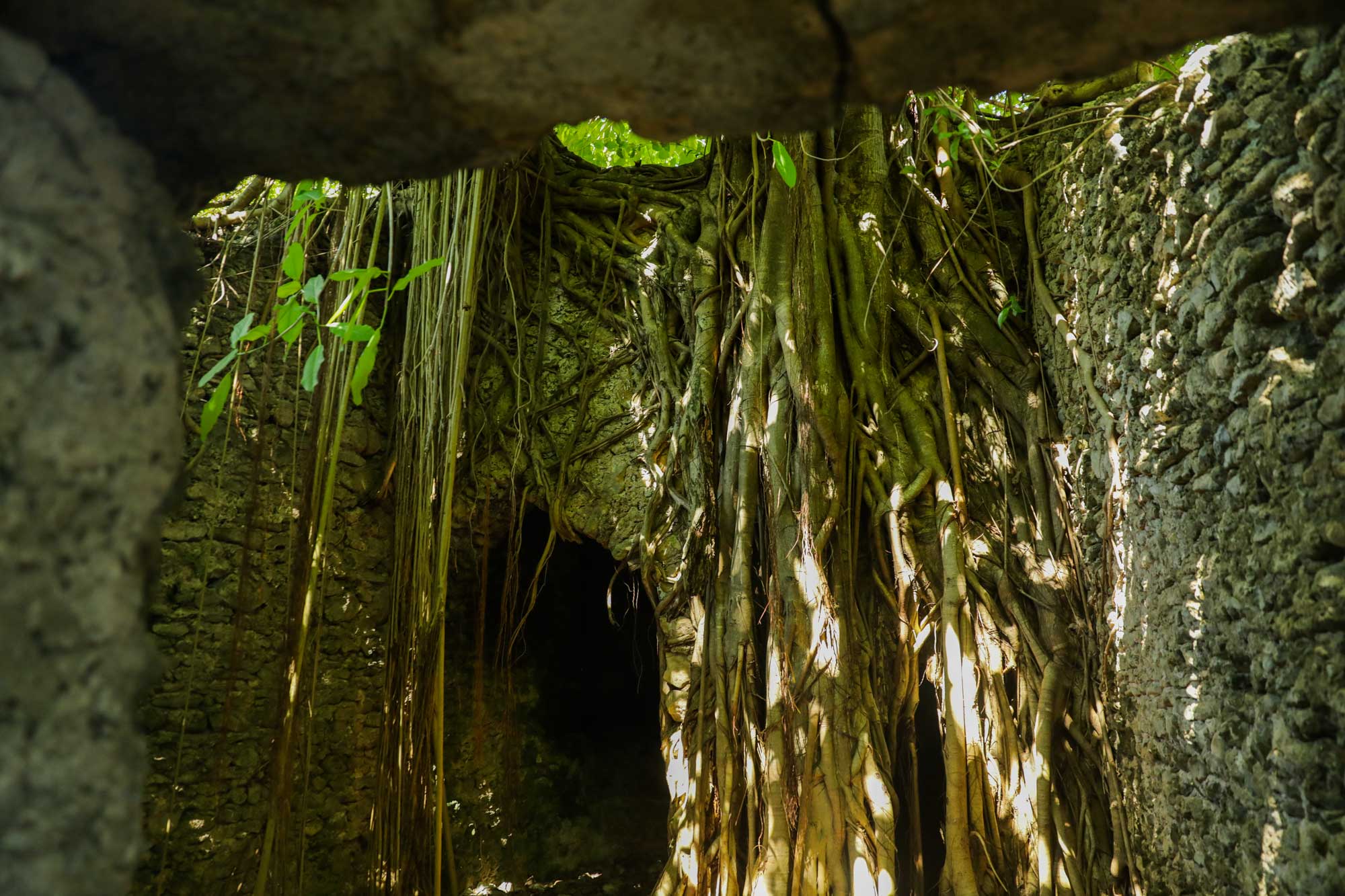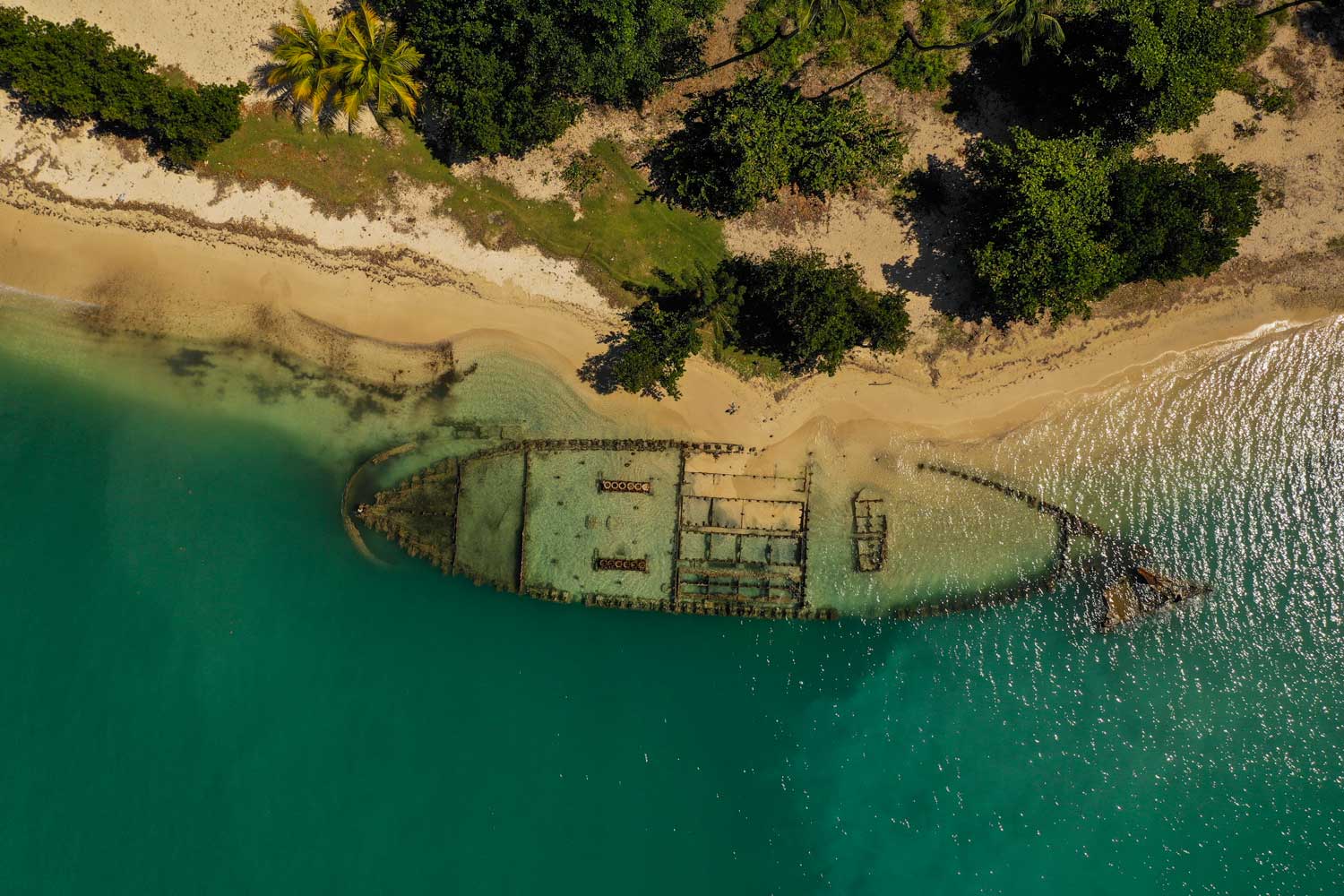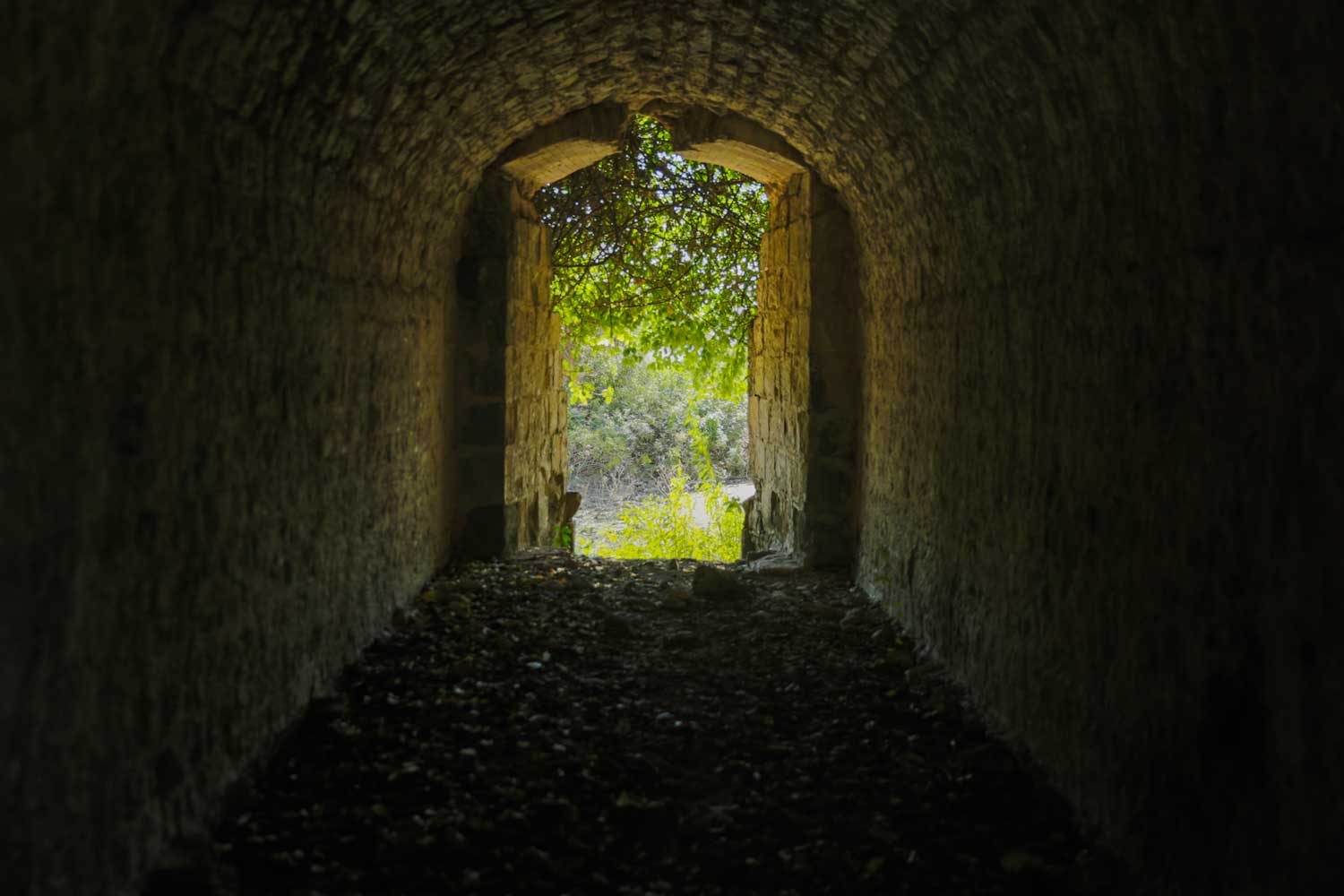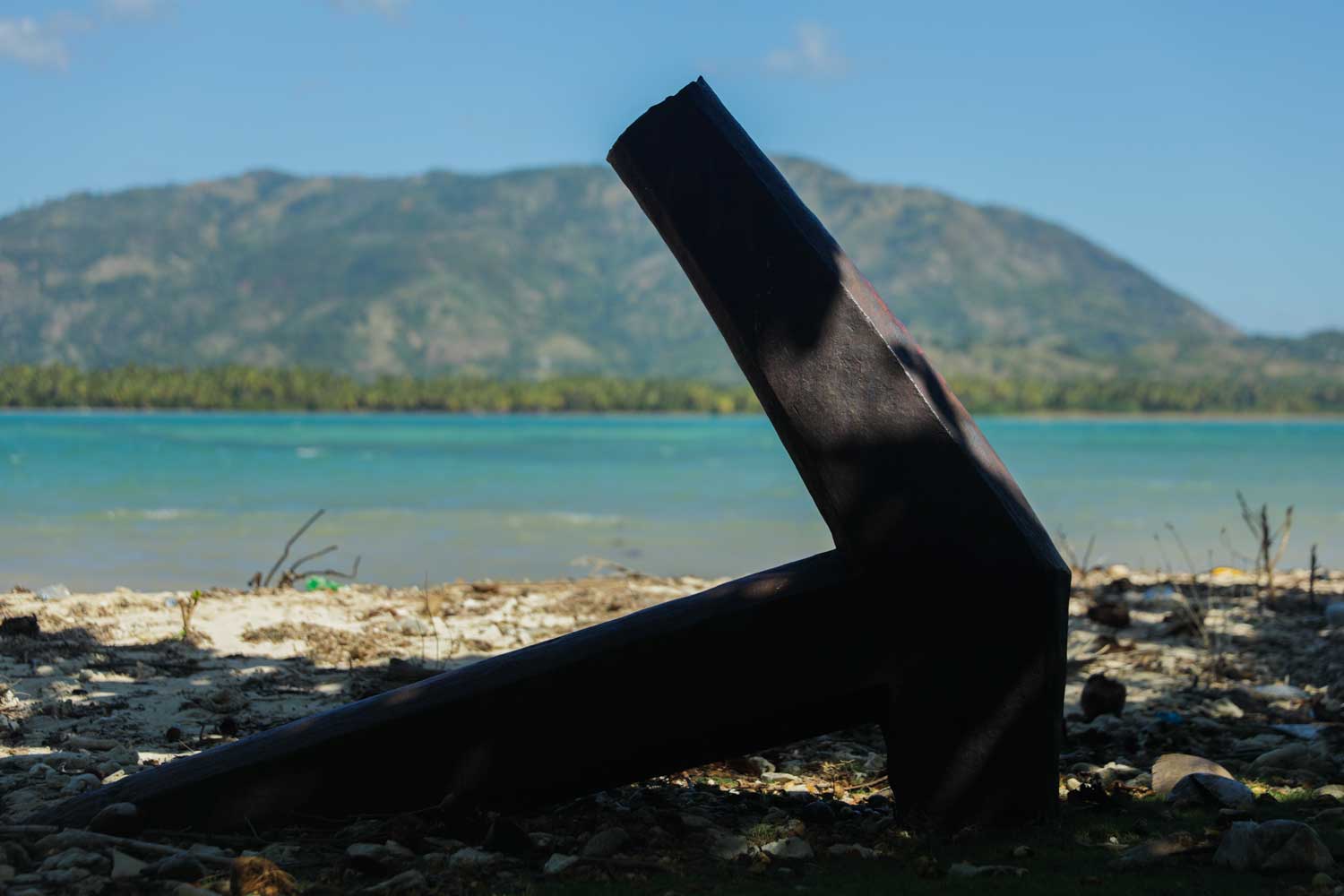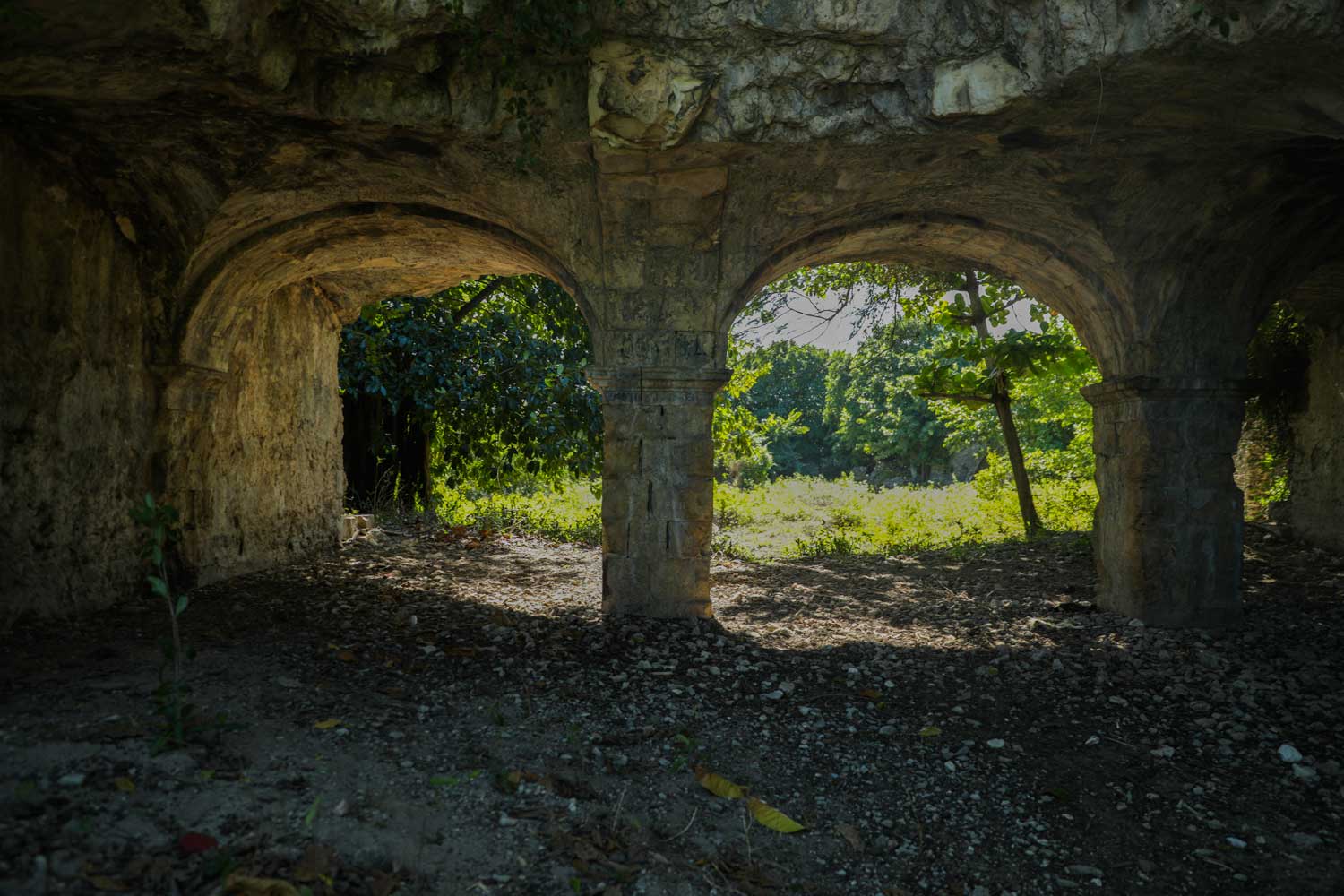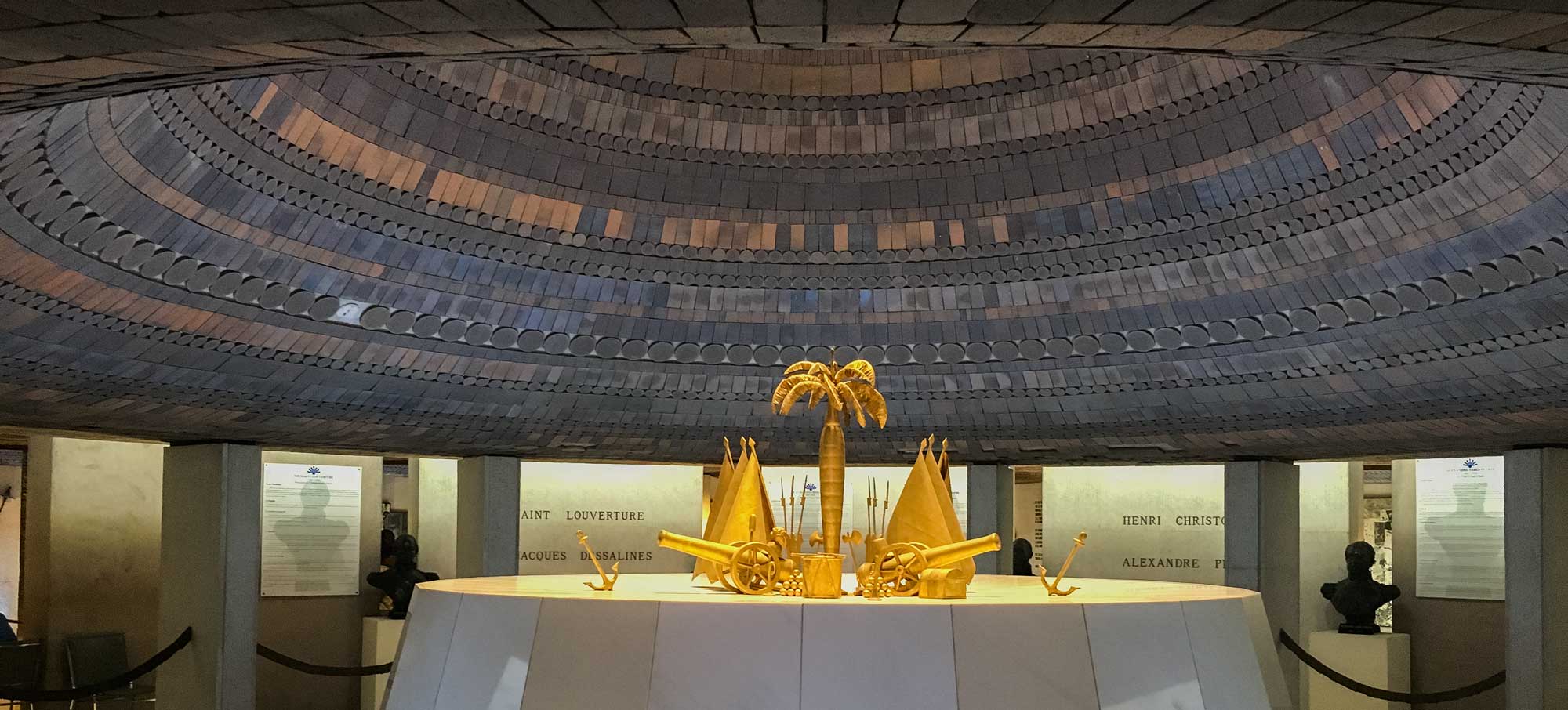
Photo: Anton Lau
The Museum of the Haitian National Pantheon
Built partially underground, this museum displays artefacts illustrating Haiti’s history with an emphasis on its revolutionary years and its political and cultural forefathers. Get up close to artefacts from a Colombus ship, slave shackles, murder weapons and the bell that rang in independence.
About the museum
Much of Haitian heritage is preserved orally. Songs, stories and structured debates rehearse and refine the histories and experiences down the centuries. As a visitor, you can only scratch the surface of this unseen medium of memory. If you’re in Champ-de-Mars, and you’re lucky, you might witness the debate circles that are part of the island nation’s oral tradition.
Material cultural memories, however, are a little easier for the curious traveller to find. If you’re in downtown Champ-de-Mars, you can find it in the Museum of the Haitian National Pantheon, or MUPANAH. Built partially underground, this museum displays artefacts illustrating Haiti’s history with an emphasis on its revolutionary years and its political and cultural forefathers.
Thanks to being partly underground, the museum survived the massive earthquake of 2010 almost unscathed. First opened in 1983, MUPANAH was designed to safeguard and display the lives and accomplishments of the country’s important forefathers: Alexandre Pétion, Henry Christophe, Toussaint Louverture, and Jean-Jacques Dessalines. This is where a lot of Haiti’s physical colonial history is kept intact.
What you’ll see
For a small fee, visitors get access to a wealth of history on Haiti and its past. Self-designated as the guardian of Haitian history, the museum is split into two show rooms: a permanent exhibit, and a temporary exhibit.
The permanent exhibit showcases artefacts from the pre-Columbian period to the contemporary period. It emphasizes the revolutionary period, during which an army of self-freed slaves and free people of color fought off the colonial system to abolish slavery.
A tour guide take visitors through Haitian history, starting off with the Taíno people who first inhabited the island. Visitors are walked through the voyages of the first colonizers to set foot on the island: the Spaniards.
Learn how Spanish colonizers used the Taíno people of the island as a resource, and how it came about that they began to traffic African slaves to Hispaniola as well.
See real examples of the actual shackles that were used to keep slaves under control, alongside gruesome instruments of torture used the slave masters. While this may be shocking for some visitors, the museum and its advisory board believe this is an important part of Haitian history that should be kept alive for the sake of our collective memory.
See the anchor of the Santa Maria ship – on which Christopher Colombus arrived in Haiti – standing at a daunting thirteen feet tall. This cold hunk of metal is a chilling reminder of the trigger that began the centuries of upheaval now embedded in the Haiti’s history and national identity.
Read documents signed by, and belonging to, prominent presidents – such as noted dictator François Duvalier – the museum also features the silver handgun which Henri Christophe used to commit suicide. On a more uplifting note, you’ll get to see the bell that was rung to announce that the country’s population were claiming their independence.
Temporary exhibits
The temporary exhibit displays artworks from various Haitian artists, and rotates on a regular basis. The art is often chosen based on a particular theme, including current events, music, social and economic issues, or historical events such as French colonisation.
Relax in gorgeous gardens
Outside of the museum are the MUPANAH Gardens. Open from Monday to Saturday, the Gardens are set in a lovely white greenhouse-like space with large open windows throughout. Light, airy, and expansive, the Gardens are a much needed antidote to Haiti’s often heavy history, and are a worthy destination in their own right for anyone looking for fresh air and tranquility in Port-au-Prince.
The Gardens feature a sculpture garden and sitting area set in the middle of typical Haitian greenery, and house the museum’s restaurant and gift shop. Overlooking the lush green spaces surrounding the museum, you can dig into some of the city’s best French cuisine. Sitting at a table in the Gardens for lunch is an upscale outdoor dining experience – a vivid contrast to the sizzling street food scene of downtown Port-au-Prince.
The Gardens also serve as a popular location for cultural events all year round, including the International Jazz Festival of Port-au-Prince. Special events, meals, or cocktails are announced at the venue itself, but also via social media.
Getting there
The museum is open seven days a week, including holidays. Tours are offered in French, Creole, and in English.
The Museum of the Haitian National Pantheon is located in Champs de Mars, downtown Port-au-Prince.
Written by Kelly Paulemon.
Published July 2019
Find the Museum of the Haitian National Pantheon
Our recommendations

Paradise for your inbox
Your monthly ticket to Haiti awaits! Get first-hand travel tips, the latest news, and inspiring stories delivered straight to your inbox—no spam, just paradise.







